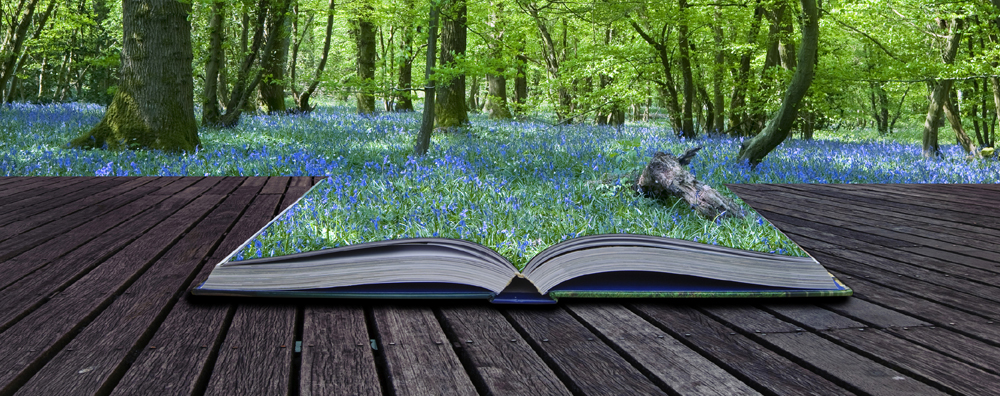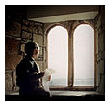Home »
Posts Tagged "Narnia"
Posted by Anne on Dec 30, 2011 in Writing | 14 comments

It’s been a while since my last post. Partly that’s because the comments in Discovered or Invented? were so thought–provoking, I had to pause to reflect for a time on a question I’d never really considered before. Are stories discovered or imagined?
There are aspects to this question I’ve pondered before but I’ve never really looked at it in just that phrasing. And I’m not sure, after considerable thought, that there’s a simple answer to it.
‘To invent [that is, to make a poem] is to come into a knowledge of the unknown thing through the agency of one’s own reason.’ This statement by the medieval grammarian, John of Garland, is cited as an idiosyncratic view by Robert Edwards in Ratio and Invention but, if John is eccentric, then he’s in very good company.
George MacDonald—the great nineteenth century fantasist who influenced CS Lewis, Madeleine L’Engle, WH Auden, JRR Tolkien and EE Nesbit, not to mention yours truly—said: ‘A man may well himself discover truth in what he wrote; for he was dealing all the time with things that came from thoughts beyond his own.’
In his notes to his children’s fantasy, The Moon of Gomrath, Alan Garner wrote: ‘The more I learn, the more I am convinced that there are no original stories. On several occasions I have ‘invented’ an incident, and then come across it in an obscure fragment of Hebridean lore, orally collected, and privately printed, a hundred years ago.’
I’ve often encountered a similar phenomenon in my own stories: scenes that I thought I’d invented out of my imagination turn out to be classic moments from certain northern myths or folktales. Names that I’d made up and then looked for through 27 books without result have subsequently popped up in the age of Google as real names with precisely the meaning I assigned to them. My spelling is often atrocious, as if I’d never seen the name but heard it sounded out in Old Gaelic or Norse and spelt it phonetically. I don’t even find this spooky any longer. Because I’ve noticed that lots of other writers do it as well. They just don’t know they do.
So is the creative process really one of discovery, rather than an exercise of imagination? Are writers explorers, rather than fabricators? I think a lot of us are, particularly in the field of fiction and more especially within the genre of fantasy. There’s a lot of talk in fantasy (and speculative fiction generally) about world–building, but sometimes I wonder: is it truly about creating or about charting an already–existing geography?
read more
Posted by Anne on Jun 5, 2011 in Writing | 5 comments
I was up early last Tuesday morning, taking a last lingering look at the line-up of planets in the pre-dawn sky. Although it wasn’t a conjunction in any real sense any longer, it was—in many ways—the most spectacular sight of the last month. Mercury, Venus, Mars and Jupiter were visible; a new moon was momentarily caught in the branches of my neighbour’s tree; twice I saw the incandescent streak of a meteor and, to cap it off, although the cloud veil seemed too thin for a storm, lightning flashed across the sky several times.
It was a bit of a worry, really. If I up and move to another country shortly, it won’t come as a complete surprise. Seven years ago I looked out my kitchen window at a new moon around this same time of year and—as a direct consequence—wound up living in New Zealand. I worked at the high school in a tiny town nestled against the Blue Mountains of West Otago: Tapanui, the edge of the rainbow.
On my first major trip around the South Island, I headed down to Gore, round to Queenstown and Arrowtown, where I visited several movie locations from The Lord of the Rings, before returning through Central Otago.
Michael Ward talks about donegality in Planet Narnia: The Seven Heavens in the Imagination of CS Lewis. By it, he means a defining but ordinary quality. As I drove through Central Otago with its strange rock formations, bleak uplands, steep stony chasms and snowgrass, I didn’t know the word ‘donegality’. But I did have the strongest sense that, if any place on earth really encapsulated Ettinsmoor from The Silver Chair, this was it.
It felt like giant country.
As I drove into Ettrick, the very name of the town seemed to confirm that sense of ettins nearby. When I investigated the local legends shortly afterwards, I wasn’t surprised to find the Māori equivalent of the ettin: Kopuwai, a brutish giant able to step from one mountain to another but now petrified as a pillar of rock on top of the Obelisk Range.
Just before I left for New Zealand, my first fantasy was published by Evergreen Books. And do mean ‘just before’: the publisher received the shipment of Merlin’s Wood the day before I left. Merlin’s Wood contains some barely-disguised ettins: I was sitting at my computer dithering about to call the alien creatures I’d just ‘invented’ when my eye lighted on The Silver Chair. Thus the giant green giraffe-like horses in Merlin’s Wood became the ettii.
read more
Posted by Moderator on May 15, 2011 in Writing | 3 comments
I woke up very early last Thursday morning and padded out to the kitchen for a drink of water. As I stood at the sink and looked out the window, I had to blink in disbelief. Three bright stars were clearly visible in a tiny triangle. What’s more, as I looked closely, I realised they weren’t twinkling. They were planets.
Thrilled, I looked even more closely: yes, there was Venus and Mars, and… was it Jupiter? And was there a very faint fourth planet? Mercury or Saturn?
I hadn’t been aware there was a conjunction of planets coming up, so to see them so unexpectedly was a marvellous and utterly serendipitous treat. I was reminded of the Chronicles of Narnia. In Prince Caspian, Dr Cornelius takes Caspian up a tower to view the salutation of the stars Tarva and Alambil as they greet each other in the Great Dance.
Inevitably, my thoughts turned to Planet Narnia: The Seven Heavens in the Imagination of CS Lewis, a wonderfully compelling investigation into the hidden code that author Michael Ward believes he has discovered in CS Lewis’ most famous work. Ward contends that each of the seven stories in the Chronicles of Narnia focuses on one of the seven planets of the medieval cosmos. His thesis is that behind the eclectic, almost chaotic mix of folklore, myth and legend, there is a grand orderly dance—an extraordinary synthesis of astronomy and literary allusion.
Ward makes a persuasive case. During the twenty years I coordinated Camp Narnia, there were several times when the team raised suspicions there was a hidden secret embedded in the stories. I remember a lengthy discussion after our herald, Karen, made the point there was a curious mistake in Caspian’s flag in The Voyage of the Dawn Treader. We all agreed that Lewis was too astute a scholar to have made the error of placing heraldic ‘metal’ on ‘metal’: a golden sun on a white background. It was obviously a clue—but it was beyond our ability to decode it.
read more
Posted by Moderator on Apr 5, 2011 in Reviews | 0 comments
LAMPLIGHTER: MONSTER BLOOD TATTOO BOOK 2
DM Cornish
Scholastic
Around the age of fifteen or sixteen, when a boy has read sufficient science fiction or fantasy to aspire to create his own literary cosmos, he begins a monster story.
Why boys choose a variation on the name ‘Jabberwock’ for the monster and why the creature’s nature should be ambiguous rather than out-and-out evil is a question I’ve never resolved.*
An archetype is obviously involved. However, this does not explain why, of the seven basic plots identified by Christopher Booker, the choice consistently falls on ‘overcoming the monster.’ Nor why the name remains constant.
read more


